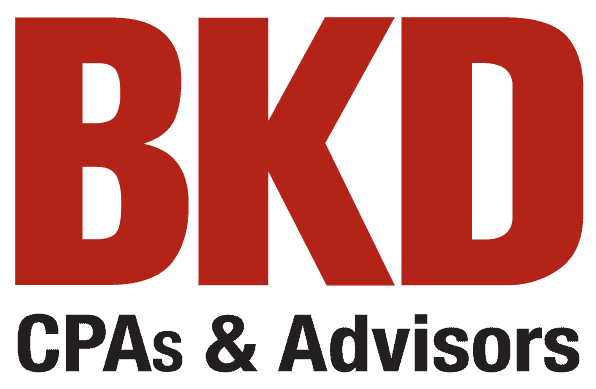
10 Fraud Prevention Tips to Help Protect Your Institution
Brought to you by BKD, LLP

According to a recent study, organizations lose 5% of revenue to fraud each year – a staggering statistic. In an effort to help institutions decrease this percentage, here are 10 fraud prevention tips.
1. Confidential Hotline
This is the single most cost-effective anti-fraud action an institution can take. Tips via hotlines are the No. 1 way that frauds are detected, according to the ACFE 2020 Report to the Nations; most tips come from employees. We encourage banks to set up a confidential hotline operated by a third party and advertise it internally to all of their employees.
2. Fraud Awareness Training
Awareness training for employees can result in shorter duration for prospective fraudulent activities and lower losses. Institution-wide awareness is critical: Turn your employees and managers into fraud detectors and take advantage of all those eyes and ears.
3. Vendor Controls
Vendor fraud is very common because of the large number of payments going out to different companies and entities. Every company has vendors/suppliers, so it’s an easy place to perpetrate fraud. Some items to consider:
-
- New vendor selection:
- Who can select?
- How are they selected?
- Due diligence on new vendors:
- Is the vendor real?
- Is their pricing reasonable?
- Is the vendor related to an employee?
- Periodically reassess vendor relationships.
- Reduce or eliminate conflicts of interest.
- New vendor selection:
4. Implement Good HR Practices
Conducting checks on candidates before they walk in the door can go a long way in preventing fraud. Additionally, having exit interviews can be a very useful tool in finding out about fraud, waste and abuse in your institution. Without the interview, exiting employees may not bother to tell you what they know.
5. Implement Mandatory Vacations
You know those employees who never take a vacation day, and if they do, they check in the whole time? It may not be because they are super dedicated. Many problems are identified during perpetrator vacations, because someone must fill in for them and perform their duties. Implementing mandatory vacations or job rotations can help identify fraudulent activities.
6. Credit Card, Expense Reimbursement Policies
Purchase and credit cards are a very common and convenient tool for committing fraud. Closely monitoring with strong controls in place is essential to reducing the risk of this type of fraud. Start with a clearly defined policy on what is and is not acceptable. Card use for “business purposes” is not good enough.
-
- What types for expenses do you really want to be paying?
- What types of expenses are not acceptable?
- What documentation is required?
7. Fraud Risk Assessment
Similar to going to the doctor for a checkup, banks should conduct a fraud risk assessment annually or biannually. The bank changes, and with those changes come different risks. A periodic fraud risk assessment can help adapt to those changes, allow executives to understand their institution’s fraud risks and focus their efforts. This assessment should be performed by someone who looks at fraud issues on a regular basis.
8. Segregation of Duties
This can be difficult for small or growing institutions that have controls that have not kept pace with their growth. Segregating duties is not a new concept, but it’s just as critical today as any time in the past.
A few places to focus on:
-
-
- A/P access to signed checks.
- A/P clerks who can set up vendors.
- Payroll clerks who can set up new employees.
-
9. Code of Conduct
These can seem like “soft” controls, but it is critical that an institution has these in place so employees cannot claim “ignorance” that what they were doing was wrong. Policies to consider implementing include:
-
- Anti-fraud policy.
- Conflict of interest policy.
- Policy related to gifts and gratuities.
10. Create the Right Culture
Culture is a critical component to fraud prevention. If leadership demands and displays integrity and transparency, it typically permeates through an institution.
-
- Tone is set at the top: Management must “walk the walk.”
- Create a positive workplace environment.
- Establish a culture of honesty and high ethics.
- Put an emphasis on doing the right thing.
Decades of experience have taught us that even if a bank implements all the tips above, it could still become a fraud victim. Fraudsters are infinitely creative with their schemes; detecting or preventing those schemes is a never-ending task. But when taken together, these top 10 tips can still go a long way in helping your institution mitigate its fraud risk.
This article is for general information purposes only and is not to be considered as legal advice. This information was written by qualified, experienced BKD professionals, but applying this information to your particular situation requires careful consideration of your specific facts and circumstances. Consult your BKD advisor or legal counsel before acting on any matter covered in this update.


